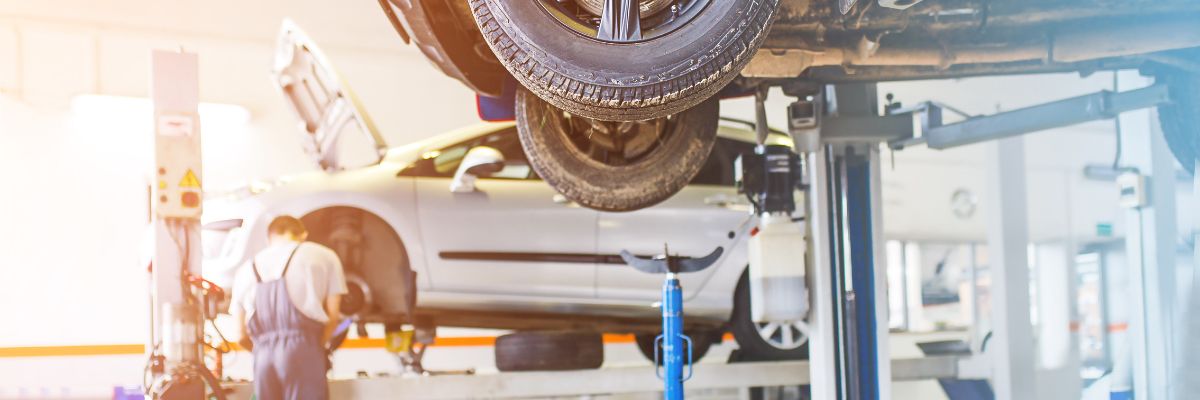Student Loans
Great Lakes Credit Union has everything you need to help manage your money and plan for the future.

Money SmartsJune 16, 2023
Guaranteed Asset Protection (GAP) insurance and Mechanical Repair Coverage (MRC) are two types of auto insurance add-ons that provide extra protection for car owners. GAP insurance can protect against financial loss if a car is totaled or stolen, while Mechanical Repair Coverage can protect against unexpected repair costs. As with all insurance products, it's important to read the policy terms carefully and make sure that the coverage suits your individual needs and circumstances.
Learn more about GLCU Guaranteed Asset Protection (GAP) insurance.
Learn more about GLCU Mechanical Repair Coverage (MRC)
Key Takeaways:
What is GAP Insurance?
Guaranteed Asset Protection (GAP) insurance is a type of auto insurance coverage that's designed to cover the "gap" between the actual cash value of a vehicle and the amount still owed on its financing or lease. This gap can occur when a car is totaled (or stolen and not recovered), and the insurance payout doesn't cover the full loan amount. In this way, GAP insurance covers more than comprehensive or collision insurance.
How does GAP insurance work?
When you purchase a new car, the vehicle's value begins to depreciate the moment you drive it off the lot. If you finance or lease the car, there's a good chance the loan or lease amount is higher than the depreciated value of the vehicle. In the unfortunate event of an accident, standard car insurance policies generally only cover the current market value of the car, which might be considerably less than the outstanding debt. This is where GAP insurance comes into play.
Here's how GAP insurance works: If your car is totaled or stolen, your standard insurance policy will typically pay the car's actual cash value — the original price minus depreciation. If you owe more on your loan or lease than the car's depreciated value, you're left with a gap that you're still responsible for paying. GAP insurance is designed to cover this difference.
For example, suppose you purchase a car for $25,000, and a few months later the car is totaled. The auto insurance company determines that the car's actual cash value is $22,000, but you still owe $24,000 on your loan. GAP insurance would cover this $2,000 "gap," ensuring that your loan is paid off. This way, you’re not left with a heft bill for a car you can no longer use.
How do I know if I have GAP insurance?

What is mechanical repair coverage (MRC)?
Mechanical Repair Coverage (MRC), also known as an extended warranty, is a policy that covers the cost of certain types of mechanical repairs and parts replacements that are not covered by a traditional auto insurance policy. MRC can be particularly beneficial for people who own older vehicles that may be more prone to mechanical issues.
The specifics of MRC policies can vary significantly. Some cover almost every type of mechanical repair, while others only cover certain components of the vehicle. The cost of the policy may depend on factors like the age of the vehicle, its mileage, and the coverage level chosen.
How does mechanical repair coverage Work?
Mechanical Repair Coverage (MRC), often known as an extended warranty, is a plan that kicks in to cover the cost of certain repairs and parts replacements once the manufacturer's warranty has expired. Unlike regular car insurance, which primarily covers costs associated with accidents, MRC is designed to pay for mechanical breakdowns that happen over time due to wear and tear.
When a covered repair is needed, you would typically pay a deductible, and then the MRC policy would cover the remainder of the costs up to its limit. Specifics of what's covered can vary greatly by plan, so it's important to read the terms and conditions carefully before purchasing.
Is mechanical repair coverage worth it?
The value of Mechanical Repair Coverage (MRC) can vary based on several factors, making it more beneficial for some individuals than for others. Some factors that may contribute to purchases mechanical repair coverage include:
GAP insurance vs. Mechanical Repair Coverage Summary
Guaranteed Asset Protection (GAP) insurance and Mechanical Repair Coverage (MRC) are auto insurance add-ons that provide extra protection, with GAP insurance covering the "gap" between a vehicle's actual cash value and the amount still owed on its financing in the event of total loss, and MRC covering certain mechanical repairs and parts replacements, particularly useful for older vehicles. The worthiness of these add-ons is dependent on individual circumstances, such as the car's depreciation, reliability, and age, and one's financial situation.